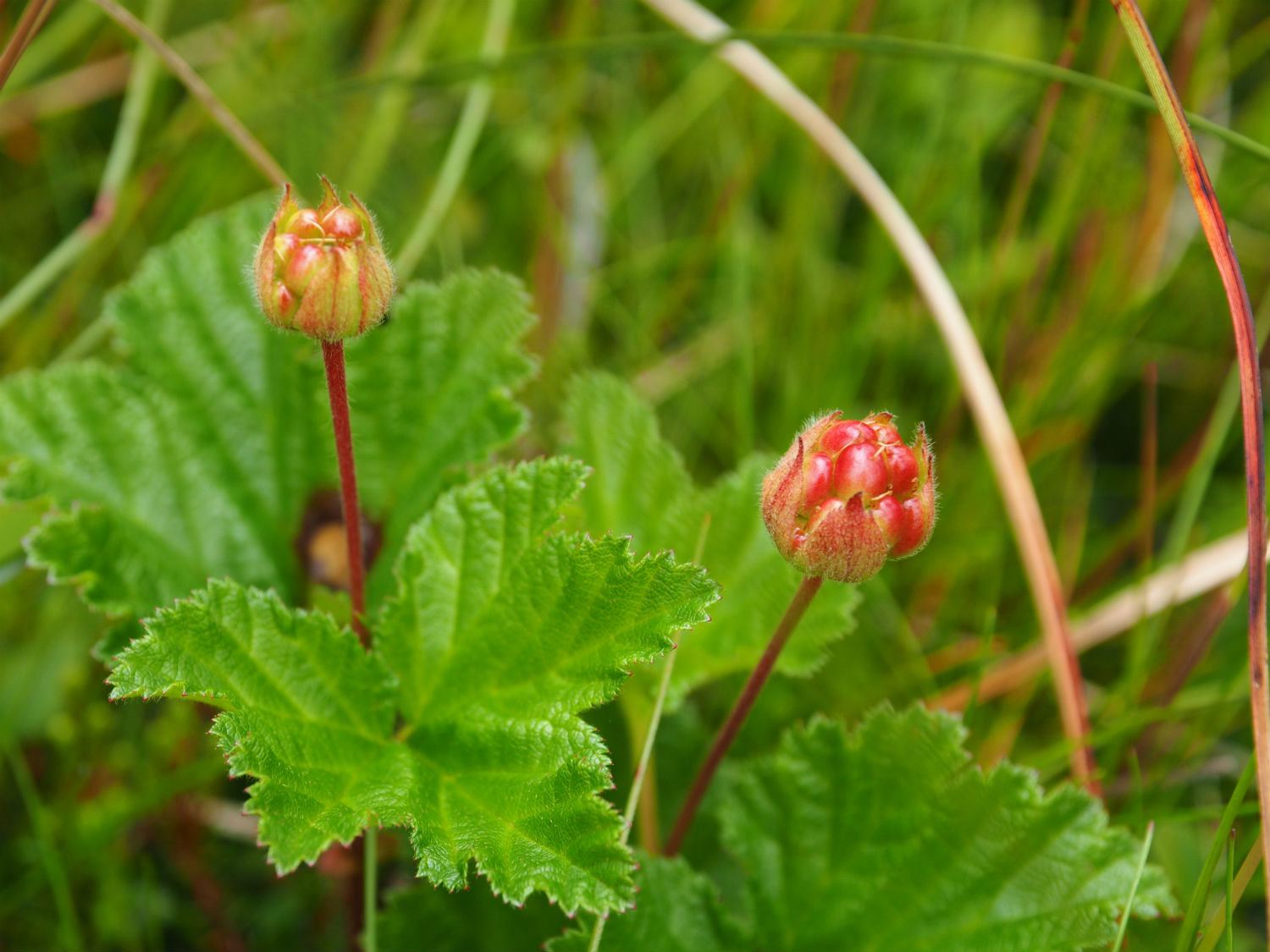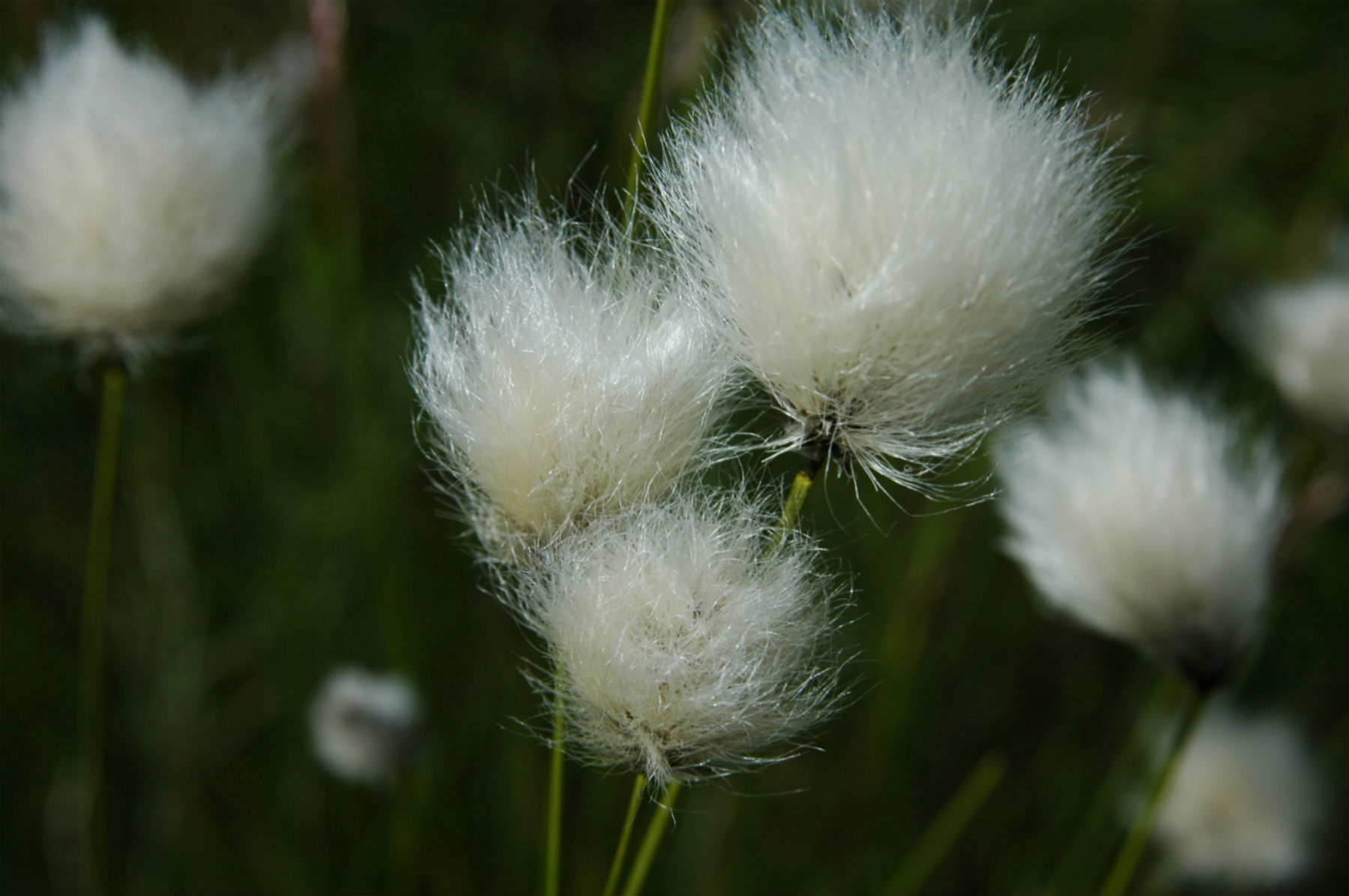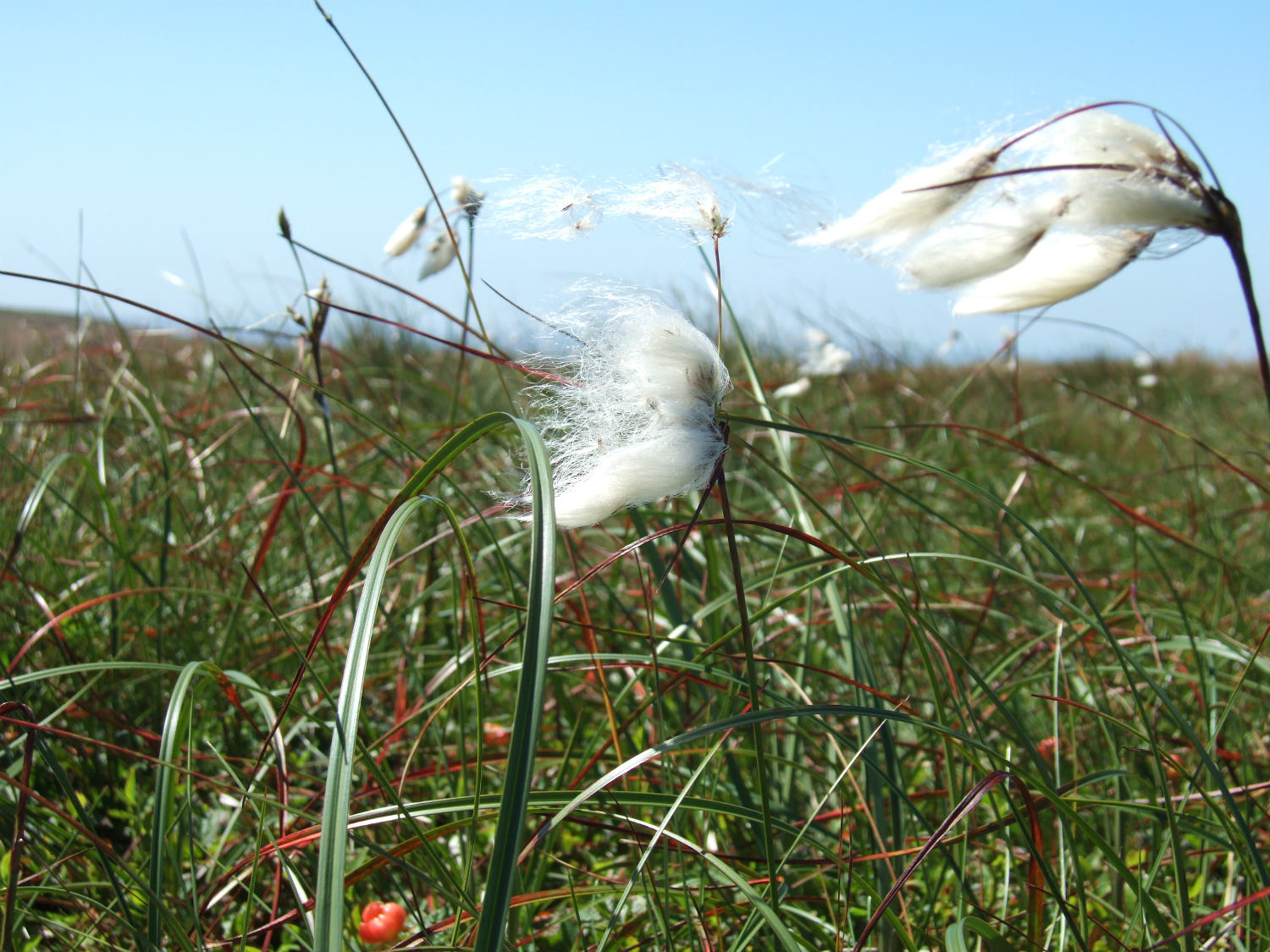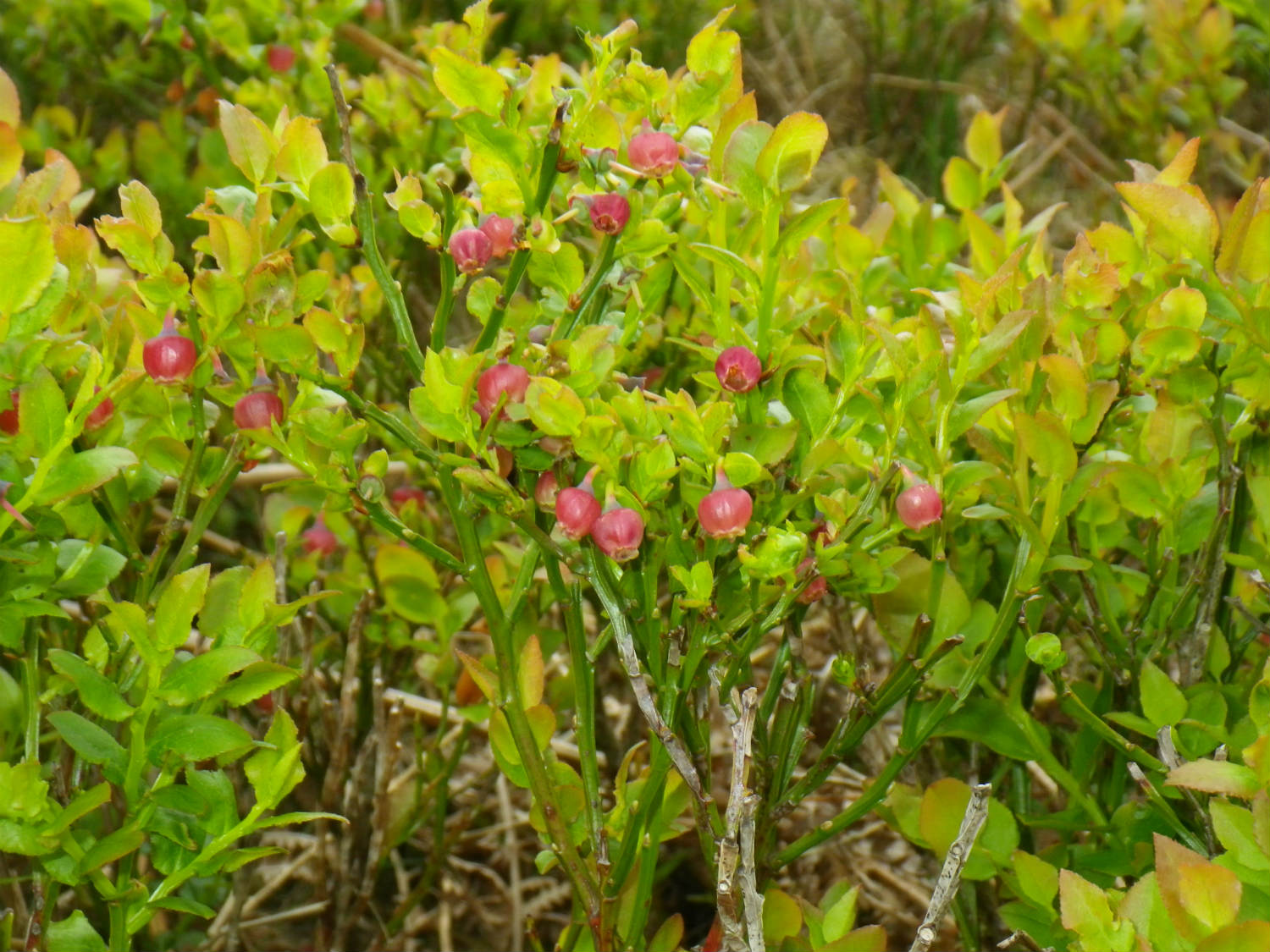
Planting sphagnum and moorland plants
Stabilising bare peat by adding heather and grasses halts the loss of peat by erosion. But for the blanket bog to begin actively creating new peat, more intervention is often needed.
An active blanket bog contains a special community of plants
The most essential of these plants are sphagnum mosses – the fundamental peat-building plants. Without these mosses, blanket bog cannot sustain itself so it is essential that sphagnum mosses are reintroduced.
Some Peak District sphagnum varieties have been lost due to industrial pollution. In many places, sphagnum of any kind is absent or scarce, so newly stabilised restoration sites are often a long way from healthy blanket bogs from which sphagnum could naturally re-colonise them.
To restore the balance, we need to find sources of suitable sphagnum species to re-introduce onto restored sites. To do this, we usually use cultivated sphagnum moss in the form of plug plants, which we plant by hand.
Sometimes we are lucky, and we have enough sphagnum nearby to supply the area. In these cases we only take up to 10% of any donor site’s mosses, so they can quickly regrow and replace the donated clumps.
A healthy blanket bog has a wide range of plants. In addition to sphagnum and heathers, where there is no local seed source, we plant native moorland plants that have extensive roots to help stabilise the peat, increase the biodiversity of the moors, and provide important habitat and food for a wide range of wildlife. We use the same propagation techniques to produce plug plants of a wide range of species of moorland, ready to plant out. They are all propagated from specimens found in the Dark Peak Site of Special Scientific Interest.
The young plants of each species need particular conditions, their ‘niche’, if they are to survive on the restoration sites. For example, crowberry needs to be planted at the top of a slope, cotton grass needs to be on a flat, wet area, and bilberry and cloudberry should be planted on the tops of peat ‘hags’, higher remnants of still-eroding peat. Even at low densities of one plant per square metre, in the right place, they will cover the peat surface in a few years.
The plants we use include:
cloudberry – Rubus chamaemorus
hare’s-tail cotton grass – Eriophorum vaginatum
common cotton grass – Eriophorum angustifolium
bilberry – Vaccinium myrtillus
crowberry – Empetrum nigrum
cross leaved heath – Erica tetralix
Plug planting
How and why we reintroduce native dwarf shrubs as part of the Moors for the Future Partnership's programme of conservation works.
Produced by the MoorLIFE Project.
Spreading sphagnum on the moors
In the last stage of our conservation works to repair bare peat, we apply sphagnum moss, which is essential to get peat growing again on the moors.
We're trying innovative ways to grow more sphagnum
Can we grow sphagnum on rafts on reservoirs to provide a sustainable, cost-effective supply?



